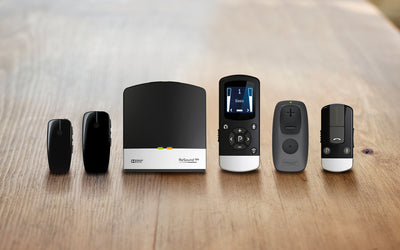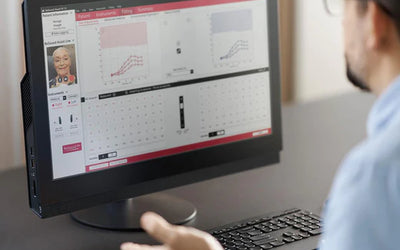By
Niamh Harnett
To get the most out of your hearing aids it is essential that you protect them from moisture.
These small devices might seem like they can’t possible have much packed into those shells, but hearing aids are powerhouses of technology. They are full of high-tech circuit boards and microelectronics. Both these elements are particularly prone to the corrosive effectives of humidity and perspiration.
Throughout the years hearing aid manufacturers have taken steps to improve the waterproof capacity of their devices. Manufacturers have introduced rubber seals and nano-coating which have even allowed some hearing aids to become suitable for shallow water use. However, despite significant efforts moisture is still one of the most damaging things to hearing aids.
Understanding and following the basics of caring for your hearing aids can go a long way in avoiding any damage due to moisture.
How to remove moisture from your hearing aids
Moisture levels differ depending on the climate you live in and how moist your ears are you’ll find there are a range of solutions to choose from.
Dry aid kits
A dry aid kit or a ‘hearing aid dehumidifier’ is a small, lidded tub that has desiccants which absorb moisture from hearing aids. These kits are handy to have on hand for regular use and for minor moisture issues that can typically be resolved overnight.
Heat and fan system
Heat and fan systems are typically more expensive than dry aid kits however they can be a better option particularly for people who live in environments with a lot of moisture. Just like a clothes dryer, heat and fan systems are designed to remove moisture using warm air and heat, some even have UV lights in them designed to kill bacteria buildup. Heat and fan systems are generally recommended for overnight use.
Vacuum chamber drying
Vacuum chamber drying is the newest technology to combat moisture in hearing aids and most audiologists will use them to dry out their patients’ hearing aids. These machines work by lowering the boiling point of moisture within the vacuum chamber, monitoring the humidity until it is as close to zero as possible. Using one of these machines takes about 12 minutes to remove moisture from a pair of hearing aids.
Why should you remove moisture from your hearing aids?
Your hearing aids are an investment in your health and wellbeing and most likely they weren’t cheap. At some point in their lifetime, they are bound to experience moisture issues. Taking care of your hearing aids and using hearing aid dryers ensures you are doing your best to protect your investment.
We are happy to help you find a provider close to you, no matter where you are in the world.
You may also be interested in our article on hearing aid prices, and how to make sure you get what you pay for.

Shop All Hearing Aids
Shop now
Shop Accessories
Shop now
Speak To Our Audiologists
Contact Us
